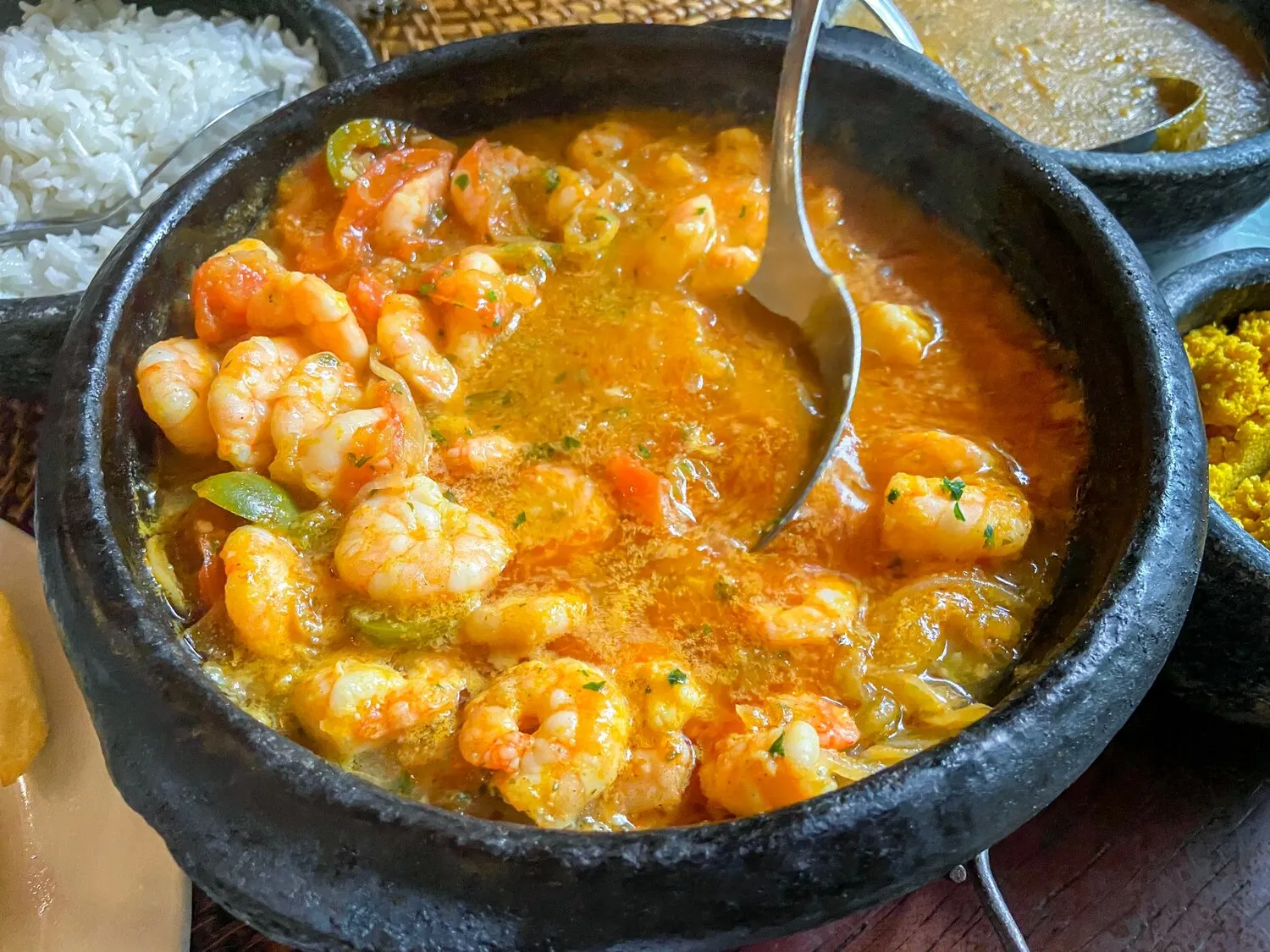
Moqueca de Peixe
A typical Brazilian seafood stew cooked in a clay pot, usually with fish, tomatoes, onions, garlic, cilantro, and coconut milk.
Nutrition Facts
* The % Daily Value (DV) tells you how much a nutrient in a serving of food contributes to a daily diet. 2,000 calories a day is used for general nutrition advice.
Quiosque Luz Do Sol
Moqueca's origins are rooted in indigenous Brazilian cooking techniques, combined with African and Portuguese influences. Indigenous peoples used clay pots and cooking methods that involved slow-cooking ingredients together. African slaves contributed ingredients like coconut milk and palm oil (dendê oil), while Portuguese settlers added seafood and other elements, resulting in the diverse and flavorful stew we know today.
Moqueca de Peixe is more than just a dish; it's a symbol of Brazilian culture, particularly in the coastal regions of Bahia and Espírito Santo. It represents the fusion of indigenous, African, and European culinary traditions and is often served during special occasions and family gatherings.
Regional Variations
Different regions in Brazil have their own versions of Moqueca. The two most famous are Moqueca Baiana (from Bahia) and Moqueca Capixaba (from Espírito Santo). Moqueca Baiana uses dendê oil and coconut milk, giving it a richer, more intense flavor, while Moqueca Capixaba typically does not use dendê oil and relies more on olive oil, resulting in a lighter, fresher taste.
Family Tradition
Moqueca is often a dish passed down through generations, with each family having their own secret ingredients and techniques. Preparing and sharing Moqueca is a way to connect with family history and celebrate cultural heritage.
Celebratory Meal
Moqueca is frequently served at celebrations, festivals, and special family meals. Its vibrant colors and rich flavors make it a festive and satisfying dish to share with loved ones.
Moqueca de Peixe boasts a vibrant flavor profile, balancing the sweetness of coconut milk, the acidity of tomatoes, and the savory taste of fresh seafood. The aromatic herbs and spices create a complex and satisfying taste.
The primary flavors come from the combination of fresh fish or other seafood, typically white fish like sea bass or grouper, stewed in a flavorful broth. The broth base consists of ripe tomatoes, onions, garlic, bell peppers (often yellow or red), and fresh cilantro. Coconut milk adds richness and a subtle sweetness, while a touch of pimenta malagueta (Brazilian chili pepper) provides a gentle warmth. In some variations, dendê oil (palm oil) is used, adding a distinctive earthy and slightly nutty flavor, as well as a vibrant orange color. Lime juice is often squeezed over the finished dish to brighten the flavors.
Use Fresh Seafood
The quality of the seafood is crucial for a delicious Moqueca. Opt for fresh, firm white fish like sea bass, grouper, or snapper. Shrimp, mussels, or other shellfish can also be added.
Don't Overcook the Fish
The fish should be cooked gently in the broth, just until it is opaque and flakes easily. Overcooked fish will be dry and rubbery. Add the fish towards the end of the cooking process.
Layer Flavors
Build the flavor of the Moqueca by layering the ingredients. Start by sautéing the onions, garlic, and bell peppers until softened. Then add the tomatoes and allow them to cook down before adding the coconut milk and other seasonings.
The Clay Pot Advantage
Cooking Moqueca in a clay pot (panela de barro) is ideal because it distributes heat evenly and imparts a unique earthy flavor to the stew. If you don't have a clay pot, a heavy-bottomed pot or Dutch oven will work well.
Explore additional Seafood Stew dishes and restaurants
Explore Seafood StewDiscover top dining spots and culinary experiences in Arraial do Cabo.
Explore Arraial do CaboLearn more about the food culture, restaurant scene, and culinary heritage of Brazil.
Explore Brazil